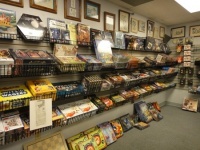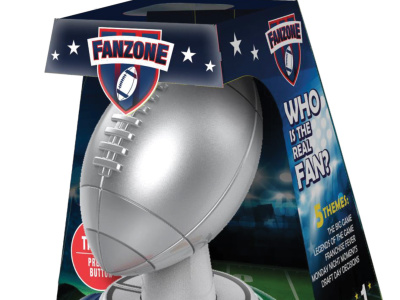 Rolling for Initiative is a weekly column by Scott Thorne, PhD, owner of Castle Perilous Games & Books in Carbondale, Illinois and instructor in marketing at Southeast Missouri State University. This week, Thorne breaks down the different kinds of space in a retail store.
Rolling for Initiative is a weekly column by Scott Thorne, PhD, owner of Castle Perilous Games & Books in Carbondale, Illinois and instructor in marketing at Southeast Missouri State University. This week, Thorne breaks down the different kinds of space in a retail store.I read a post this week by Gary Ray of Black Diamond Games on his "Quest for Fun" blog, about event space in stores and the importance (or not) of it paying for itself. This got me thinking about the five types of store space and what the way a store uses them says about the store's business strategy.
As I noted above, all retail stores have five basic types of store space (some books may call these by different names):
Selling space -- Selling space is store space devoted to the display of product that the store has for sale. If a customer can walk up to a product, pick it off the shelf or rack, take it to the counter and purchase it, that product is in a store's selling space. If a customer does not have direct access to the product, i.e. a store opts to keep its Magic: The Gathering and Yu-Gi-Oh! packs behind the counter to minimize pilferage but the store still has it on display and will sell it, that is selling space (as an aside, I have never understood stores that put statues, prints or figures out on display but won't sell them. I visited a store just this week with a very nice display of superhero symbol neon signs in the window. When we asked how much they were, we were told they were not for sale. Why are you wasting valuable selling space that you are paying rent on with products you don't want to sell? If you really don't want to sell it, put an astronomical price on it. If you REALLY cannot part with it, take it home or move it to employee space. Everything in your selling space should have a price on it).
Storage space -- Any product that won't fit into its designated selling space goes into storage space. Customers do not have direct access to this space. Most retailers want to minimize storage space as much as possible since, unless you have a good tracking system, products put there may get forgotten and you certainly cannot sell it. At one time, Walmart's policy was that everything that came through the loading dock had to hit the sales floor within 72 hours. Made more work for staff but avoided having product sit in the receiving area.
Employee space -- This is your office space or employee lounge or lockers. If you do mailorders, they would be handled in employee space. Any store workspace gets categorized as employee space. Again, this is an area to which customers do not have access. A number of stores I know, including ours, combine employee and storage space.
Customer space -- Space that you have dedicated to customer use. If you have benches or chairs for customers to sit on while in the store or if you have a demo table, that is customer space. If you have a public bathroom, that is customer space. Going back to Gary Ray's original post, event space serves as customer space. It indirectly moves product but giving someone who just bought a copy of Battle of Westros a place to play it, therefore encouraging that sale. It may generate revenue for the store, and does in many stores, but unless it has product sitting on the tables, ready for sale, it is customer rather than selling space. Of course, I know a number of stores that put product for sale out on demo tables, then clear it off when time for a demo. At one point it is customer space, then at another time serves as selling space.
Dead space -- Any space that cannot be used for one of the other four functions. Most stores work to minimize this space as much as possible. A classic example of dead space is the space in front of a fire exit. Space in front of it has to remain empty. You cannot put a product display in front of it; you cannot even set up a demo table in front of it. You have to live with it, maybe by putting promotional posters or a tracking chart for a game league on it. I have even seen clothing stores put full length mirrors on them for customer use. A flexible mind is important when considering dead space.
Your thoughts? I plan on writing more on customer space, especially as used for events, in a future column.
The opinions expressed in this column are solely those of the writer, and do not necessarily reflct the views of the editorial staff of ICv2.com.







